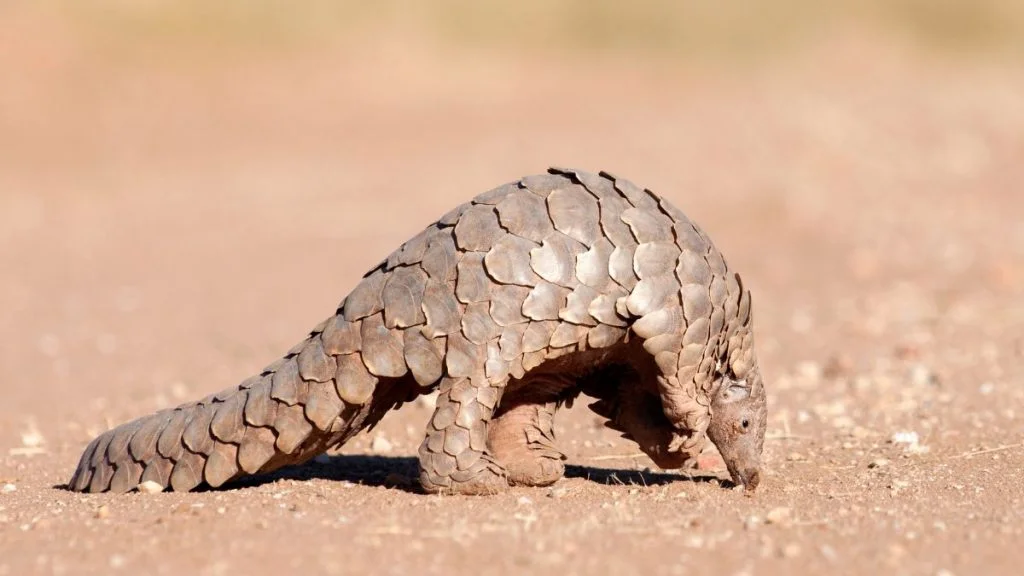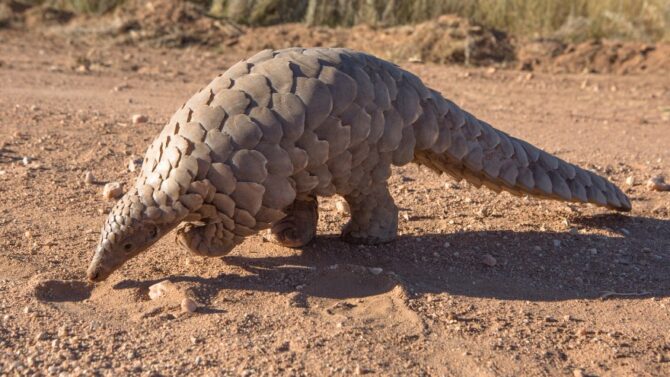Pangolins, also known as scaly anteaters belong to a group of mammals of the order Pholidota.
They have a physically distinctive appearance, with their body covered with horny overlapping scales that help protect them against predators, making them the only mammals with scales.
Pangolins are the world’s most trafficked mammals, especially in Asia and Africa. Their scales are used in traditional medicine in China to treat diseases like arthritis, asthma, rheumatism, etc., and the meat is a nutritious delicacy for the wealthy in parts of Asia like Vietnam and China.
Read on for more facts about pangolins, their nature, behavior, the global risks these animals face, and what you can do to save them from extinction.
Quick Facts

| Scientific Name | Manidae |
| Scientific Classification | Kingdom: Animalia, Phylum: Chordata Class: Mammalia Mirorder: Ferae Clade: Pholidotamorpha Order: Pholidota |
| Size | Weight: 1.5–33 kg (3.5–73 lbs) Length: 30–152 cm (12–60 in) |
| Life Span | Little data, up to 20 years (in captivity) |
| Habitat | Depending on the species, floodplain grasslands, forested savanas, dense, swamp and lowland forests – all close to a water source |
| Diet | Insectivorous |
| Gestation Period | 3 to 5 months |
| Predators | Hyenas, Leopards, pythons, humans |
What is a Pangolin? (The Only Mammals With Scales)
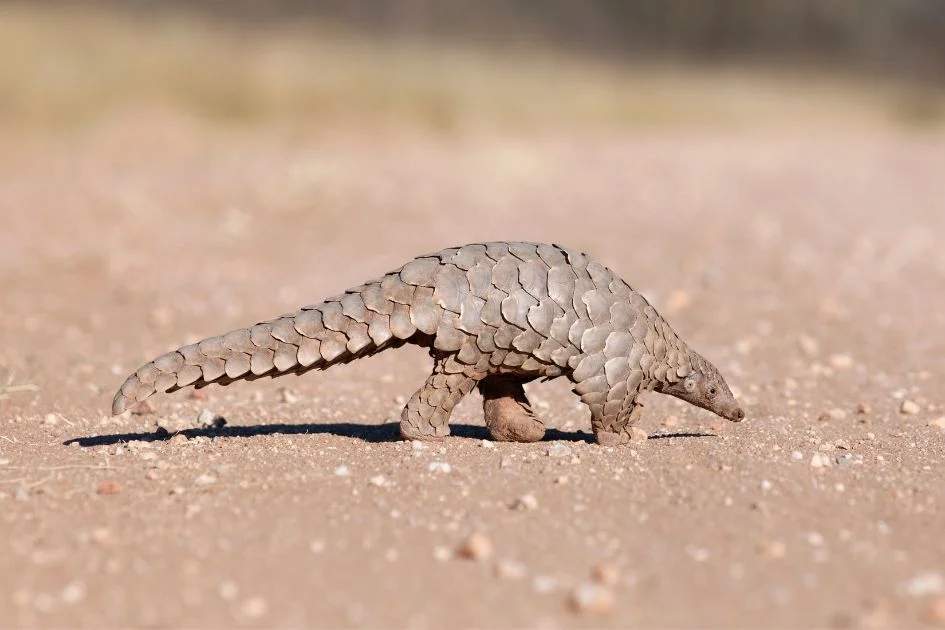
Pangolin is derived from “peng-guling,” the Malay word for roller, which is their habit of rolling into a ball when defending itself against predators.
Despite their scaly appearance, they are not reptiles, as most people misrepresent them.
Pangolins are the only mammals with scales covering their bodies. These scales are made up of keratin and account for about 20% of its weight. It helps to protect them from danger and predator attacks.
When they sense danger or a predator attacks them, they immediately roll up into a ball, letting out a stinky fluid as a defense strategy.
These creatures are also characterized by a small head, elongated snout, and a broad long tail. Although there is no visible external ears, their hearing ability is quite good.
These animals don’t have teeth. However, their stomach is specially adapted for crushing food. They consume sands and small stones to assist with the grinding process.
Interesting Facts About Pangolins You Should Know
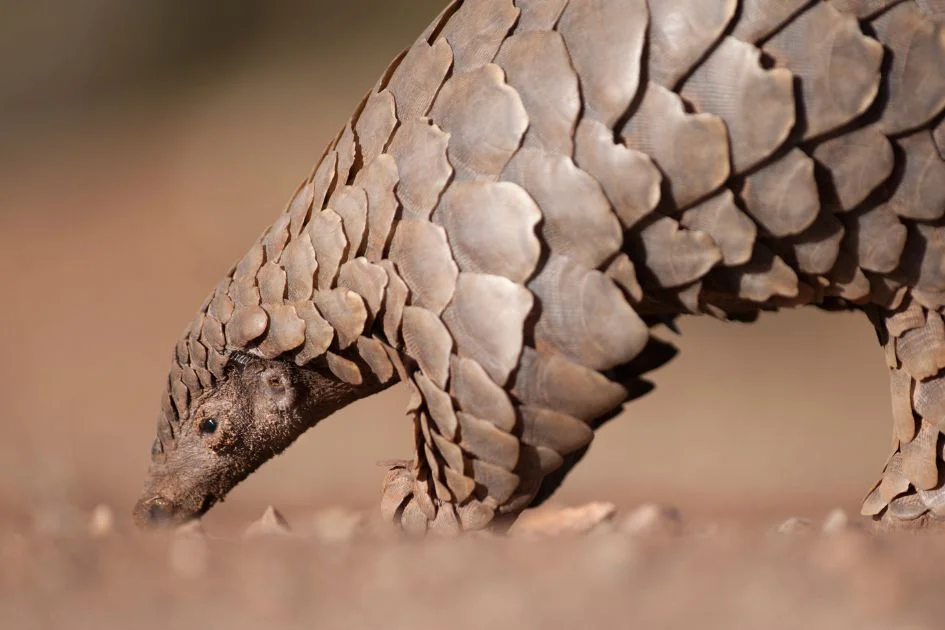
Behavior
These scaly anteaters are nocturnal mammals (creatures of the night) that feed mainly on insects like ants and termites.
Most species live on land. However, some species, such as the black-bellied, primarily found in Africa, can climb trees.
Unlike some wild animals, these creatures are harmless and shy. They respond to attacks by curling up in a ball shape with their scales, offering protection against predators.
Fun Fact: What is a group of pangolins called? There is no official collective name for pangolins because they are solitary animals and do not live in groups. Check out the collective nouns for other animals.
Size
Pangolins typically weigh 1.5 to 33 kg (3.5 to 73 pounds) and grow to 30 to 152 cm (12 to 60 inches) in length, depending on their age and species.
How Do Pangolins Reproduce?
These African and Asian mammals mate when they attain the sexual maturity at age of two years, and they only stay together when mating and bearing young ones.
At birth, baby pangolins, called pangopups, are about 6 inches long and weigh around 12 ounces. The scales of the young ones are soft and pink but become hard after two days.
Pangopups are weaned for two months, during which they ride on the tail of their mothers.
There are 8 Different Types of Pangolins
There are eight different species of pangolins globally, and they are found in Africa and Asia. These species are majorly classified as vulnerable and critically endangered.
African pangolin species:
- Giant ground pangolin (Smutsia gigantea) – Vulnerable
- Tree or White-bellied pangolin (Phataginus tricuspis) – Vulnerable
- Long-tailed or Black-bellied pangolin (Phataginus tetradactyla) – Vulnerable
- Temminck’s ground pangolin (Smutsia temminckii) – Vulnerable
Asian pangolin species:
- Sunda pangolin (Manus javanica) – Critically Endangered
- Chinese Pangolin (Manis pentadactyla) – Critically Endangered
- Philippine pangolin (Manis ciliogenesis) – Endangered
- Indian pangolin (Manis crassicaudata) – Endangered
Pangolin Diet: What Do They Eat?
Pangolins are insectivores and feed only on insects like termites, ants, and larvae. They are also referred to as the scaly anteaters because they lack teeth.
These animals utilize their tongues that are sticky for picking up prey, and their tongues extend to great lengths enabling them to reach prey from a long distance.
Also, they can shut their ears and noses when feeding, preventing their prey from escaping.
Pangolin Population: Are They Endangered?
Pangolin populations are in danger as they are decreasing in numbers due to harmful human practices like hunting and trafficking.
About tens of thousands of these animals are hunted yearly and killed, mainly for their meat and use in native Chinese medicine.
According to the IUCN, the four Asian species are critically endangered, and the four African species are tagged as vulnerable.
Illegal Trading: Why is the Pangolin the Most Trafficked Mammal in the World?
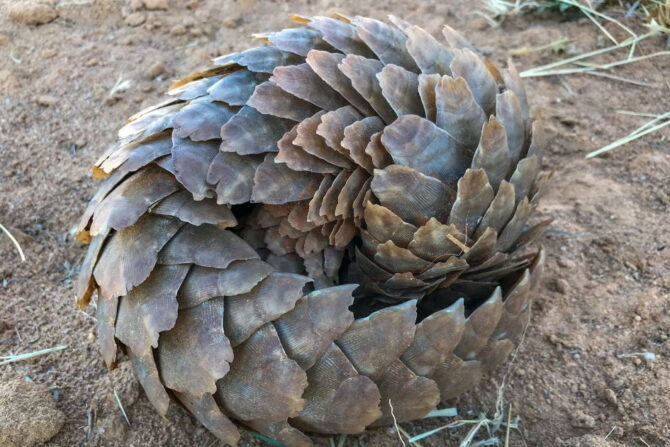
As a result of the high demand for these animals, they have become the most trafficked mammals in the world besides humans.
In countries such as China and Vietnam, pangolin meat is a delicacy for wealthy people.
Furthermore, the scales of these creatures are made of keratin, the same type of protein that makes up horns, fingernails, and hair.
Just like the rhino horn, pangolin scales have no proven medical value. Still, they are used in native Chinese medicines to treat diseases like rheumatism, arthritis, and asthma. These scales are dried, ground into powdered form, and reproduced into pills.
Their scales are also used as materials to produce items like bags, belts, and boots in northern and southern America.
These harmful human activities have led to the depletion of Asian species, increasing the demand for the African species.
According to statistics, more than 1 million pangolins were hunted and trafficked within ten years.
In 2019, the data indicated that 20 of these animals are poached every hour, necessitating the enlistment of the Asian variants as a critically endangered species.
According to reports, within a week in April 2019, a shipment of 14-ton scales from an estimated 72,000 pangolins from Nigeria was seized by Singapore, becoming the highest ever recorded.
Traffickers and poachers have hugely depleted the Asian scaly anteaters population, turning to Africa for more scales and meat.
Reports also indicate that more than 200,000 of these African and Asian mammals were killed from 2011 to 2013, representing a fragment of the illegal trade.
Wildlife experts believe the seizures indicate one-tenth of the total quantity of the illegal trading of these animals.
Are Pangolins Protected Worldwide?
In 2016, 186 member countries of the Convention on International Trade in Endangered Species (CITES) voted to prohibit the commercial trading of pangolins to safeguard the species from further extinction.
The eight different species are protected under two categories in all the 186 countries; the four Asian species are critically endangered, while the four African species are listed as vulnerable.
In 2020, the Chinese government increased the conservation of the traditional Chinese species (Manis pentadactyla) by banning the use of their scales in native Chinese medicine.
These efforts boosted the fight against trafficking and poaching of these animals in China—a major market for their meat and scales.
Summary
Although their bodies are covered in scales, these species are mammalians and not reptiles.
Human activities such as hunting, poaching, and trafficking continue to increase the extinction rate of these scaly mammals.
The best solution to protect this scaly mammal from going extinct is to promote public awareness through campaigns and educate people about the damage to the wildlife population and the lack of evidence of any medical value of these mammal’s scales.
